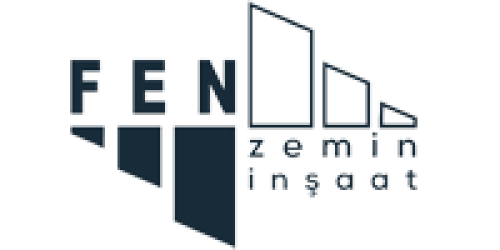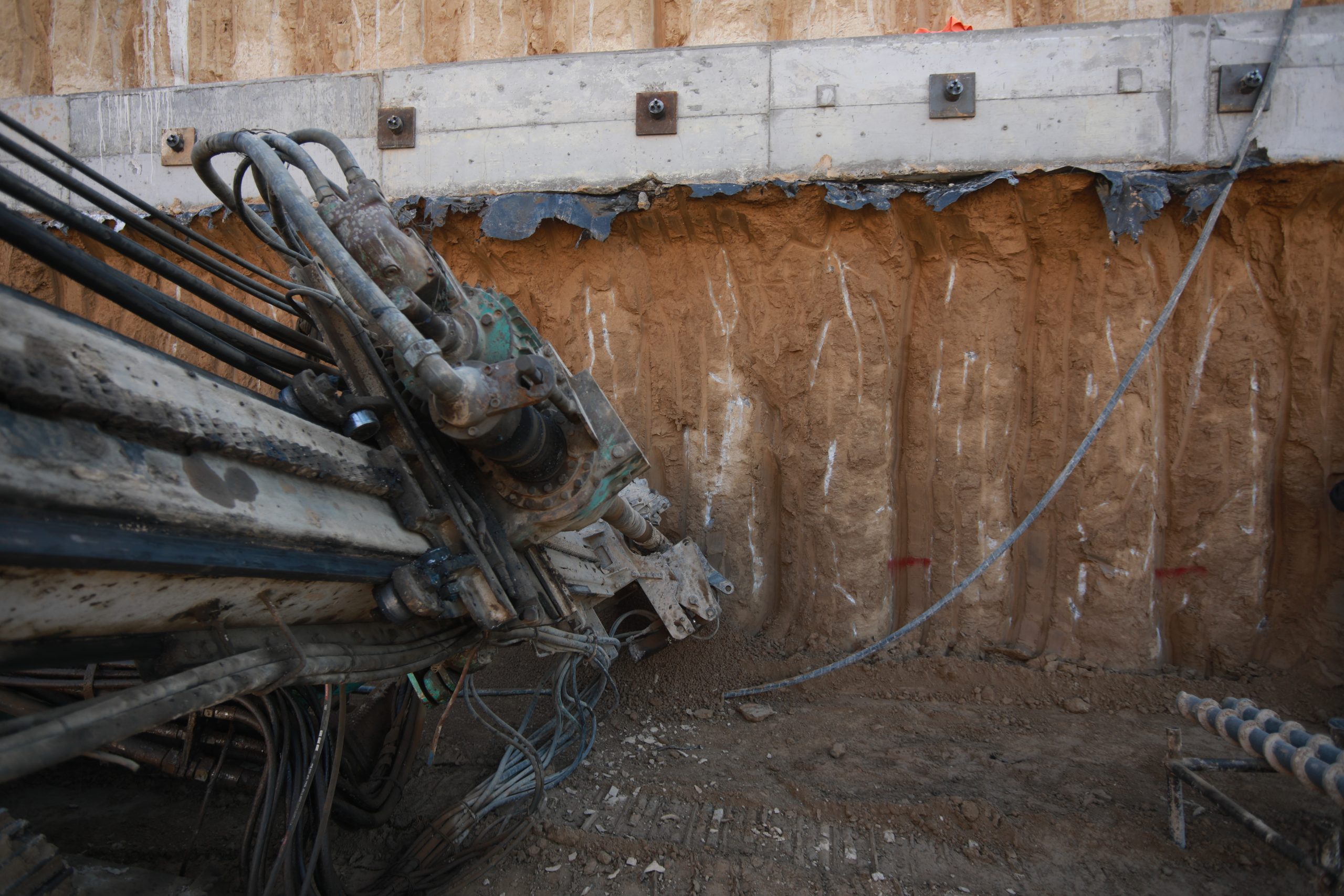In an anchored retaining structure, vertical elements are formed by bore piles, while the structure is supported by varying numbers and sizes of bracing beams and prestressed anchors, depending on factors such as soil and groundwater conditions, surrounding loads, and deformation criteria. Depending on the project, prestressed permanent anchors or prestressed temporary anchors can be used.
First, after the construction of the vertical elements (bore piles) is completed, the bore piles are connected to each other at the top level with a head beam.
After the completion of the head beam, excavation is carried out in stages, and prestressed anchors along with the bracing beams to which they will be connected are built, establishing the retaining system in parallel with the excavation from top to bottom.
After the drilling process, which is performed with an anchor drilling machine according to the project specifications, is completed, the prepared anchor reinforcement (bundle) is placed into the drill hole. The anchor bundle is then injected with the help of an injection pump from the bottom of the hole upwards. The process is completed when injection slurry emerges from the hole’s mouth. Afterward, a reinforced concrete diaphragm or anchor belt beam (bracing beam) is constructed in front of the anchored area. The anchor plate and anchor cage are mounted onto the belt beams and, with the help of an anchor jack, the anchor cables are locked at the project load.
In cases where prestressed anchors cannot be used due to environmental conditions, the vertical bore pile elements can be supported by support pipes or beams (struts) resting on the bracing beams within the excavation.

